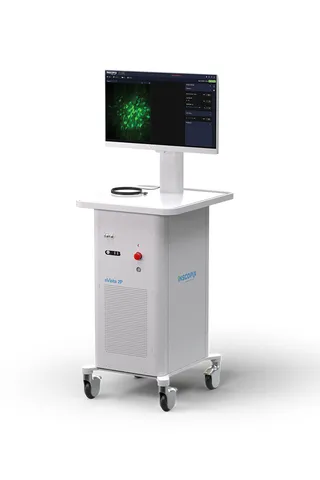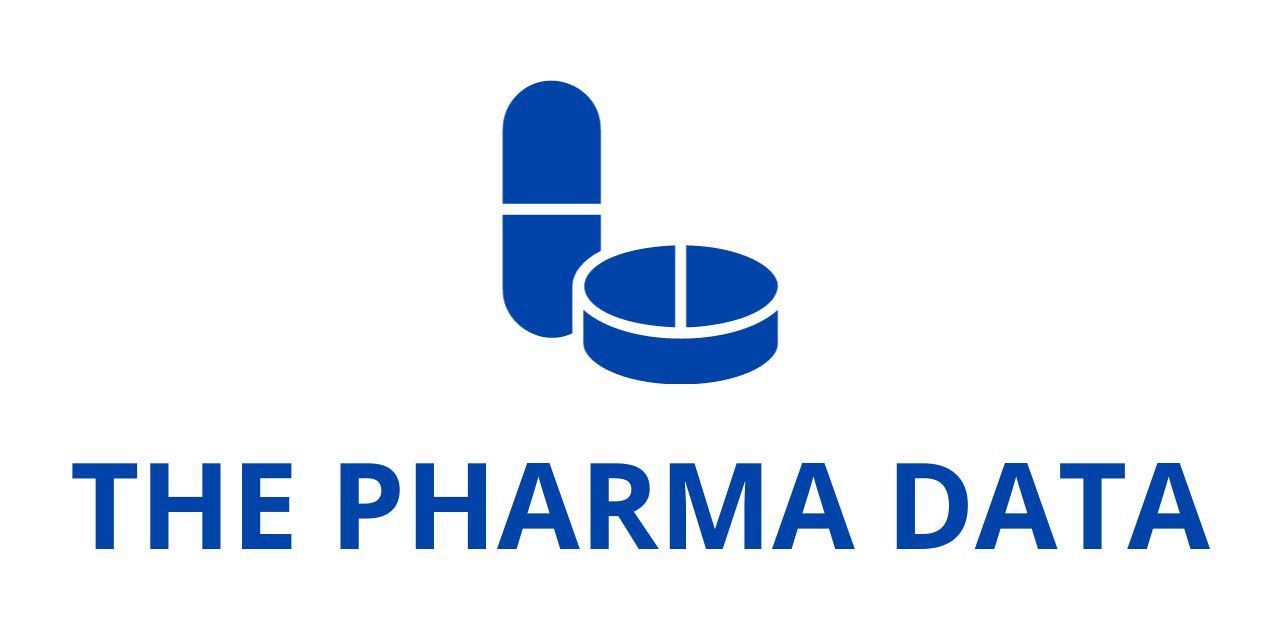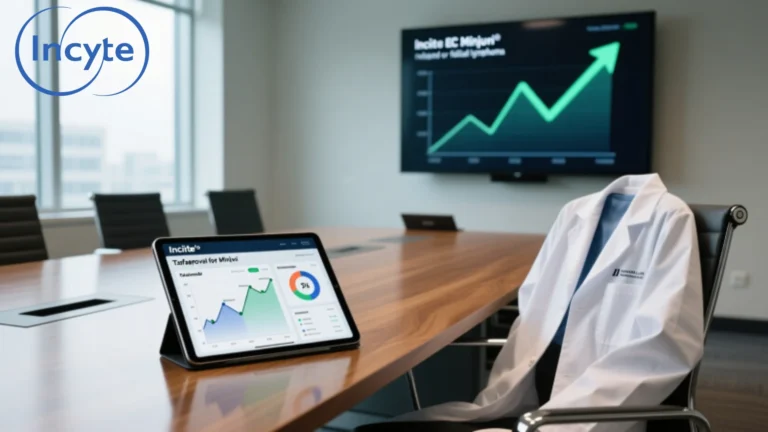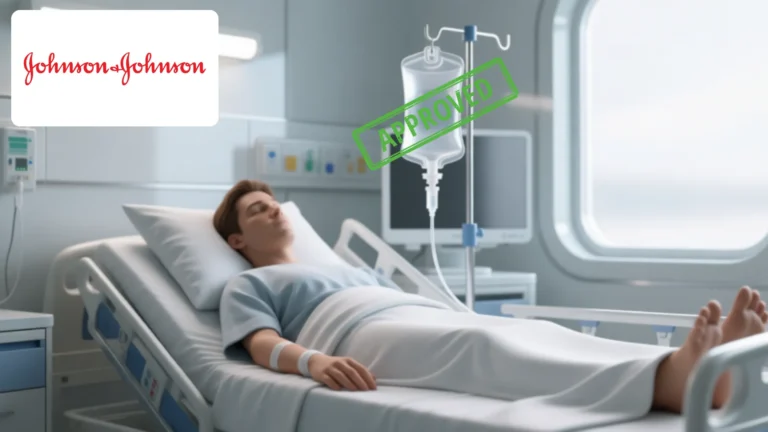
Bruker Launches nVista 2P: A New Generation of Miniature Two-Photon Microscopes
Bruker Corporation a global leader in scientific instruments and imaging technologies, has announced the launch of the nVista 2P, a next-generation miniature two-photon (2P) fluorescence microscope that brings deep-tissue, high-resolution imaging to freely behaving animals. Designed under the Inscopix product line, the nVista 2P represents a major advancement in in vivo neuroscience tools, providing unprecedented insights into brain function through the power of advanced two-photon microscopy.
This groundbreaking system is the first of its kind to offer robust, real-time functional imaging at the sub-cellular level in a miniature, lightweight, and self-contained form factor. With single-cell resolution and a 3D imaging capability, the nVista 2P is poised to transform the way researchers investigate neuronal circuit dynamics, disease models, and brain-behavior relationships.
A New Era in Miniaturized Two-Photon Microscopy
Traditional two-photon microscopes, while powerful, have typically required animals to be head-fixed or anesthetized during imaging due to their large size and complex setup. The nVista 2P disrupts this paradigm by combining the deep imaging capabilities of 2P technology with the freedom of movement typically associated with one-photon (1P) miniature microscopes. Weighing approximately 2 grams, the nVista 2P is the lightest full-featured two-photon imaging system currently available, enabling researchers to capture brain activity in naturalistic behavioral environments.
This miniaturized system allows for imaging depths of up to 300 microns, enabling detailed interrogation of neural activity in deep brain regions such as the entorhinal cortex, hypothalamus, and hippocampus—areas often implicated in memory formation, spatial navigation, and neurodegenerative diseases. The enhanced resolution also supports sub-cellular imaging, giving neuroscientists a powerful tool to visualize dendritic and synaptic activity that underlie complex brain functions.
Versatility in Experimental Design
The nVista 2P microscope is designed to be compatible with a wide range of surgical and experimental preparations. It integrates seamlessly with GRIN (Gradient Refractive Index) lenses, both shallow and deep, as well as cranial window preparations. This versatility ensures that the device can be used to study virtually any region of the rodent brain while maintaining compatibility with established 1P miniscope protocols. For research teams with existing Inscopix systems, the transition to 2P imaging requires minimal changes to workflows, facilitating rapid adoption.
Importantly, this innovation supports longitudinal studies, enabling repeated imaging of the same brain region across days or weeks. This capability is crucial for tracking disease progression or the effects of interventions such as pharmaceuticals, optogenetic manipulation, or behaviorally induced plasticity.
A Seamless User Experience for Researchers
Ease of use has been a defining characteristic of Inscopix’s product line, and the nVista 2P continues that tradition. The system includes an intuitive user interface designed to simplify setup, data acquisition, and analysis. From sample preparation to final data visualization, the workflow has been engineered to reduce training time and maximize experimental throughput.
Dr. Mostafizur Rahman, a Postdoctoral Fellow at the Dulac Lab, Harvard University, shared his experience with the system:
“The 2P miniscope’s lightweight, compact, and adaptable design, paired with its thoughtfully crafted, intuitive interface, ensures exceptional ease of use. It significantly advances our ability to address compelling scientific questions. Having previously relied on the Inscopix 1P miniscope, we have experienced a seamless transition to the 2P miniscope, further amplifying its value as a powerful tool for our research.”
Dr. Rahman’s remarks underscore the microscope’s accessibility for both early-career and experienced researchers alike, offering them a scalable and powerful platform to explore complex brain processes with unmatched resolution.
Driving Breakthroughs in Brain Research

The nVista 2P is not just an incremental improvement—it represents a paradigm shift in how researchers can study the living brain. By enabling three-dimensional data acquisition in freely moving animals, it allows for more naturalistic investigations of cognition, perception, memory, and behavior. This is especially important in studies where the full behavioral repertoire of an animal is necessary to interpret neuronal data accurately.
According to Dr. Kunal Ghosh, CEO of Inscopix,
“The introduction of nVista 2P marks a major step forward in free-roaming miniscope innovation that complements Bruker’s industry-leading benchtop Ultima multiphoton microscope technology. The unique ability of this new system to acquire high-resolution brain data in three dimensions, and its seamless integration with our exclusive sample preparation-to-results workflows, make it an ideal tool for researchers studying neuronal circuits in freely-behaving animals.”
This integration with Bruker’s Ultima line brings added value, enabling labs to adopt a multi-scale imaging strategy. Scientists can now bridge insights across systems—from high-throughput benchtop platforms to free-behaving models—unlocking new layers of biological complexity.
Applications in Neurological Disease Models
As neurodegenerative disorders such as Alzheimer’s, Parkinson’s, and Huntington’s diseases continue to pose major public health challenges, tools like the nVista 2P become indispensable. The system enables deep-tissue recording in disease-relevant regions, facilitating drug discovery, mechanistic studies, and therapeutic screening.
In the realm of psychiatric disease, where aberrant neural dynamics in distributed circuits are thought to underlie symptoms, the ability to perform longitudinal imaging in naturally behaving animals is transformative. Whether assessing altered reward processing in addiction or disordered prefrontal-limbic interactions in anxiety, nVista 2P provides the spatiotemporal resolution necessary to uncover novel therapeutic targets.
Furthermore, the system supports neurodevelopmental research, including the study of early circuit formation and plasticity in autism Bruker spectrum disorders or epilepsy models. By enabling detailed tracking of neuronal ensembles over time, researchers can investigate how abnormal wiring or signaling patterns emerge and evolve.
A Technological Milestone in Functional Imaging
The launch of the nVista 2P places Bruker and Inscopix at the forefront of innovation in neuroscience tools. The system combines:
- Two-photon excitation for superior signal-to-noise and deeper imaging
- 3D data reconstruction for comprehensive circuit analysis
- Ultra-lightweight hardware for compatibility with freely behaving animals
- Versatile surgical compatibility with GRIN lenses and cranial windows
- User-friendly software for streamlined experiment management
Together, these features open the door to a new class of experiments previously considered infeasible due to technical constraints.
With the introduction of the nVista 2P, Bruker continues to solidify its position as a leading innovator in neuroscience imaging. As neuroscience moves toward integrative approaches combining genetics, behavior, and cellular physiology, tools Bruker that enable high-resolution, longitudinal, in vivo imaging in ethologically relevant settings will be essential.
By empowering researchers to unlock the complexities of the brain in its natural context, the nVista 2P is not just a product—it’s a scientific enabler that may catalyze the next generation of breakthroughs in brain science, drug discovery, and personalized medicine.




